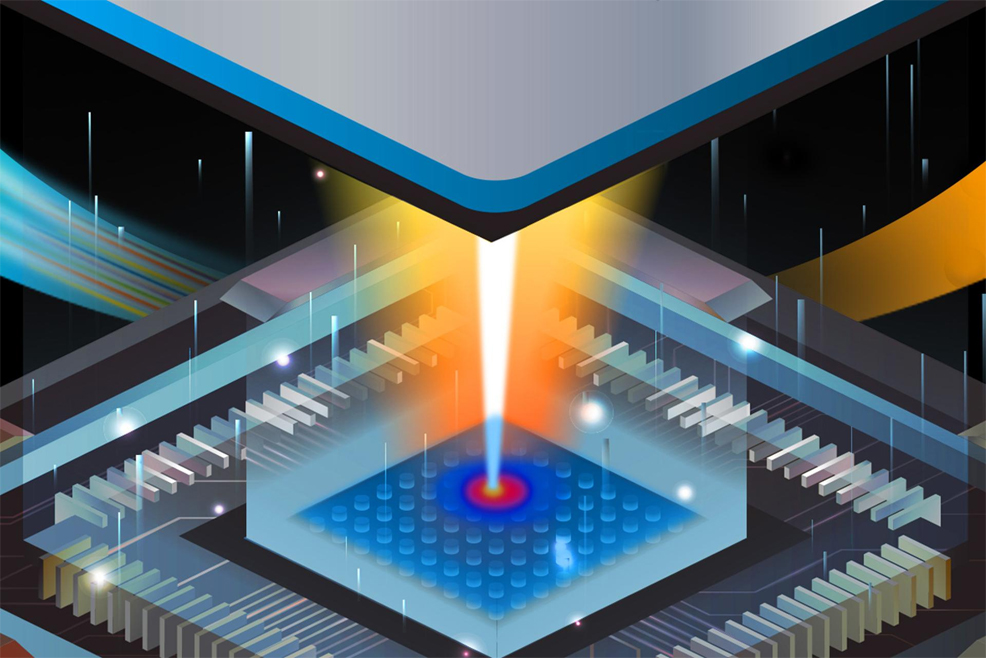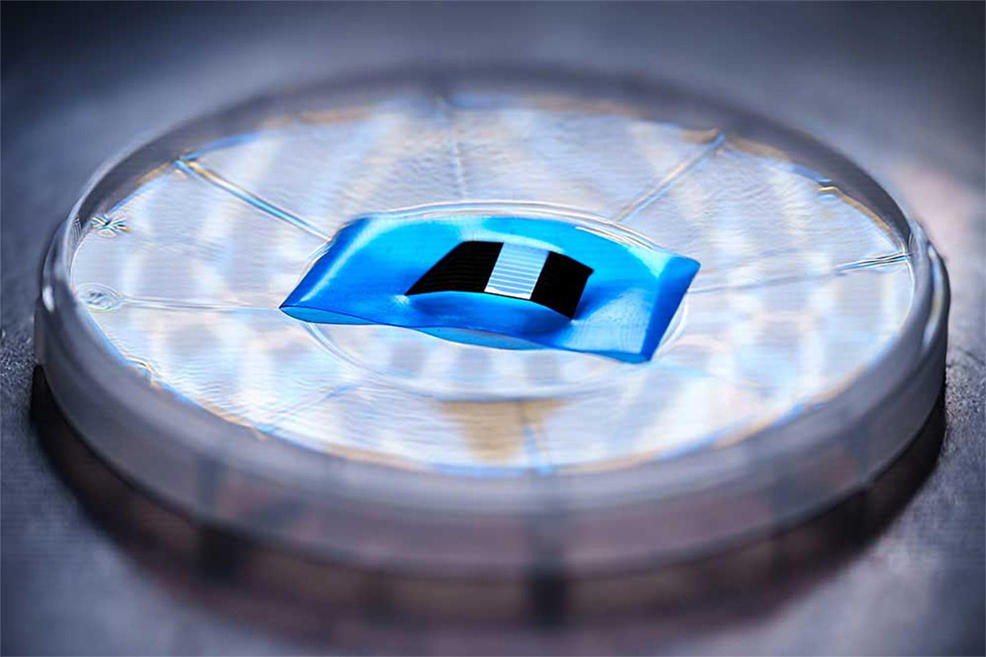
22nd April 2025 Laser-cooled chips could transform data centre efficiency Maxwell Labs, in collaboration with Sandia National Laboratories and the University of New Mexico, has announced a new laser-based photonic cooling system for computer chips, aiming to reduce data centre energy use while improving processor performance.
Data centres are the beating heart of our digital world – powering everything from cloud storage and video streaming to artificial intelligence and complex scientific simulations. Yet these facilities are notorious energy guzzlers, with up to 40% of their power consumption devoted solely to cooling the heat generated by high-performance computer chips. Now, a new technology being developed in the United States could revolutionise how these data centres keep their systems from overheating. This month, Maxwell Labs – a Minneapolis-based startup that specialises in photonic technologies – has announced a promising new collaboration with Sandia National Laboratories and the University of New Mexico. The team is working to develop a laser-based cooling method that could eventually outperform traditional air and water systems, while also enhancing processor performance by preventing heat-related slowdowns. At the heart of this innovation is something known as photonic cooling. Rather than relying on flowing water through copper plates or circulating cold air, the new approach involves finely-tuned laser light directed at microscopic hotspots on a chip's surface. When set to specific frequencies and targeted precisely enough, these lasers can actually cool rather than heat the material – a surprising twist on what we normally expect from lasers. This effect occurs in semiconductor materials under very controlled conditions and has previously been used in quantum research and even the cooling of antimatter. However, this latest research is the first time such a technique has been directed at the thermal management challenges of modern computing hardware. To make this possible, the team is developing a new type of "photonic cold plate" made primarily from gallium arsenide. This cold plate would be less than a millimetre thick and designed with tiny features thousands of times smaller than the width of a human hair. These intricate structures would channel laser light with extraordinary precision, cooling specific points on a chip that are most prone to overheating.
This method offers potentially major advantages over existing cooling systems. Not only could it reduce energy consumption substantially, but it may also overcome many of the constraints that limit chip design today. Traditional cooling systems often force compromises in performance and layout, as engineers have to work around the need to dissipate heat evenly. With photonic cooling, however, light can be used to manage thermal hotspots more directly and responsively, potentially unlocking entirely new levels of computing power. The timing of this innovation could prove critical. As artificial intelligence models continue to grow in size and complexity, and as the demand for cloud services shows no sign of slowing, data centres must become more efficient to keep up. Lowering their cooling requirements would not only cut operational costs but also reduce strain on local power and water supplies – a growing concern in many regions, particularly those prone to drought. Moreover, chips kept at optimal temperatures can run faster and more reliably, avoiding so-called "thermal throttling" that often kicks in under heavy workloads. Maxwell Labs' CEO, Jacob Balma, has described the technology as a paradigm shift, suggesting that it could change the very way we design and use computers. "The unique capability of light to target and control localised heating unlocks thermal design constraints so fundamental to chip design that it's hard to predict the full impact," he explained. "But it will fundamentally change the types of problems we can solve with computers." With fabrication handled by Sandia Labs – renowned for its precision in semiconductor manufacturing – and performance analysis conducted at the University of New Mexico, the project brings together a formidable blend of innovation, technical expertise, and academic insight. While the technology is still in the development phase, early models suggest that it could eventually match or surpass conventional cooling methods. If perfected, it may either complement or entirely replace air and water-based systems, depending on the needs of individual data centres. The potential for energy recovery – capturing and reusing waste energy – adds another intriguing possibility further down the line. As computing power continues to scale up exponentially in the years ahead, breakthroughs like this offer hope for a more sustainable and efficient digital future. Photonic cooling could help make data centres not just greener, but smarter too – laying the foundation for faster, cleaner, and more capable technologies in the decades to come.
Comments »
If you enjoyed this article, please consider sharing it:
|
||||||









